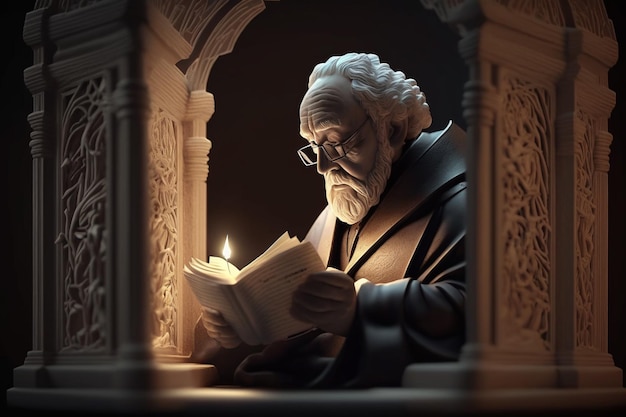

Leonardo da Vinci was born on April 15, 1452, in Vinci, Italy.
Da Vinci was known for his diverse talents in painting, sculpting, architecture, engineering, and science.
His most famous painting, the Mona Lisa, is considered one of the greatest artworks of all time.
Da Vinci was left-handed, and he often wrote in mirror writing, a reversal of normal script.
He was an avid inventor, conceptualizing ideas for flying machines, war machines, and even an early version of the tank.
Leonardo da Vinci’s anatomical studies were groundbreaking for their detailed understanding of human and animal bodies.
Da Vinci’s notebooks, which number over 6,000 pages, contain his observations, ideas, and sketches.
The Last Supper, another famous painting by da Vinci, depicts Jesus and his twelve disciples.
He was a vegetarian and an animal rights advocate, refusing to kill animals for his anatomical studies.
Leonardo da Vinci was employed by the powerful Medici family in Florence as a painter and designer.
He used innovative painting techniques such as chiaroscuro, creating a contrast of light and dark within his artworks.
Da Vinci’s Vitruvian Man is a famous representation of ideal human proportions, inspired by the Roman architect Vitruvius.
He was intrigued by the idea of flight and produced numerous sketches of flying machines based on his observations of birds.
Leonardo da Vinci was known for his perfectionism, often leaving his artworks unfinished.
His fascination with water led him to design hydraulic systems, canals, and even a portable bridge.
Leonardo da Vinci believed that understanding nature was key to understanding all aspects of life.
He was instrumental in advancements in the field of optics, exploring how light interacts with the human eye.
Da Vinci’s Codex Atlanticus is a collection of his sketches and writings on various subjects, including engineering and astronomy.
He worked for several influential patrons throughout his life, including the Duke of Milan and the French King Francis I.
Leonardo da Vinci was known to have dissected more than 30 human corpses to study the human anatomy.
His artistic techniques heavily influenced the Renaissance period and subsequent generations of artists.
Da Vinci’s painting, Salvator Mundi, became the most expensive artwork ever sold when it was auctioned for $450 million.
He designed the first-ever professional kitchen, complete with specialized tools and utensils.
Leonardo da Vinci was fascinated by animals and nature, often studying and sketching them in his journals.
He was a pioneer in the field of paleontology, studying and documenting fossils of ancient creatures.
Da Vinci’s architectural designs were ahead of his time, incorporating innovative features like domes and flying buttresses.
Leonardo da Vinci believed that art and science were intertwined and should be studied together.
He was intrigued by the concept of perpetual motion, attempting to design machines that would run indefinitely.
Da Vinci’s flying machine designs included wings inspired by bat wings and helicopters powered by human muscle.
He developed a new technique for painting called sfumato, which created soft transitions between tones and colors.
Despite his numerous achievements, Leonardo da Vinci considered himself a failure due to his unfinished projects.
He believed that understanding the human body was crucial for creating realistic and accurate artworks.
Da Vinci designed innovative musical instruments, including the viola organista, a fusion of a piano and a viola.
Leonardo da Vinci was fascinated by the movement of water and conducted various experiments on its properties.
His artworks continue to inspire countless artists and designers to this day.
Da Vinci’s scientific investigations included studying the flight patterns of birds, the growth of plants, and the flow of blood.
He was passionate about the power of observation and encouraged others to observe and question the world around them.
Leonardo da Vinci’s notebooks were filled with sketches and ideas, demonstrating his constant curiosity and imagination.
He was a proponent of humanist philosophy, emphasizing the importance of human potential and achievements.
Da Vinci’s study of optics led him to create a camera obscura, a tool that projected images onto a surface.
Leonardo da Vinci’s machines and designs were only fully appreciated centuries after his death, as many weren’t built during his lifetime.
He invented a self-propelled cart, a precursor to the modern automobile, powered by coiled springs.
Da Vinci’s engineering skills were applied in the construction of fortifications, water supply systems, and canals.
Leonardo da Vinci’s inventions and designs showed a deep understanding of physics and mechanics.
He left a lasting legacy as a Renaissance polymath whose contributions to art, science, and engineering continue to be revered today.
Around the world, coffee enthusiasts enjoy Monin coffee concentrate since it is a multipurpose product. Conveniently combining…
The Importance of Choosing the Right Shower for Your Bathroom Renovating your bathroom can be…
Usain Bolt holds the record for the fastest 100-meter sprint in history.Bolt was named Sportsman…
Love is in the air... and it smells suspiciously like chocolate!Roses are red, violets are…
Life's a beach, take a picture and relax.Sun, sand, and salty kisses. That's what beach…
Hungary is home to the largest thermal water cave system in the world.The Rubik's Cube…